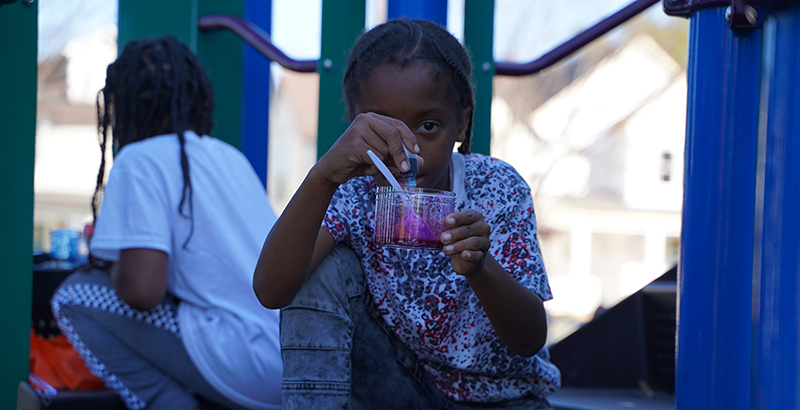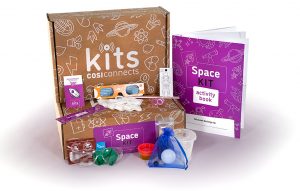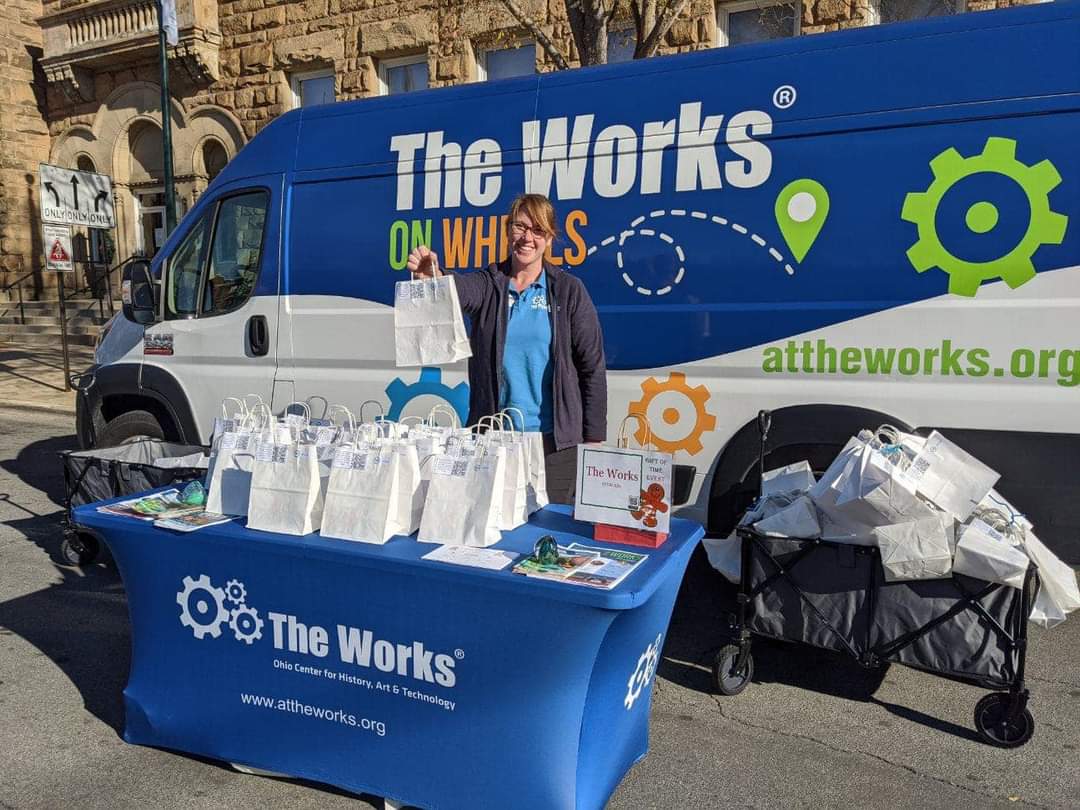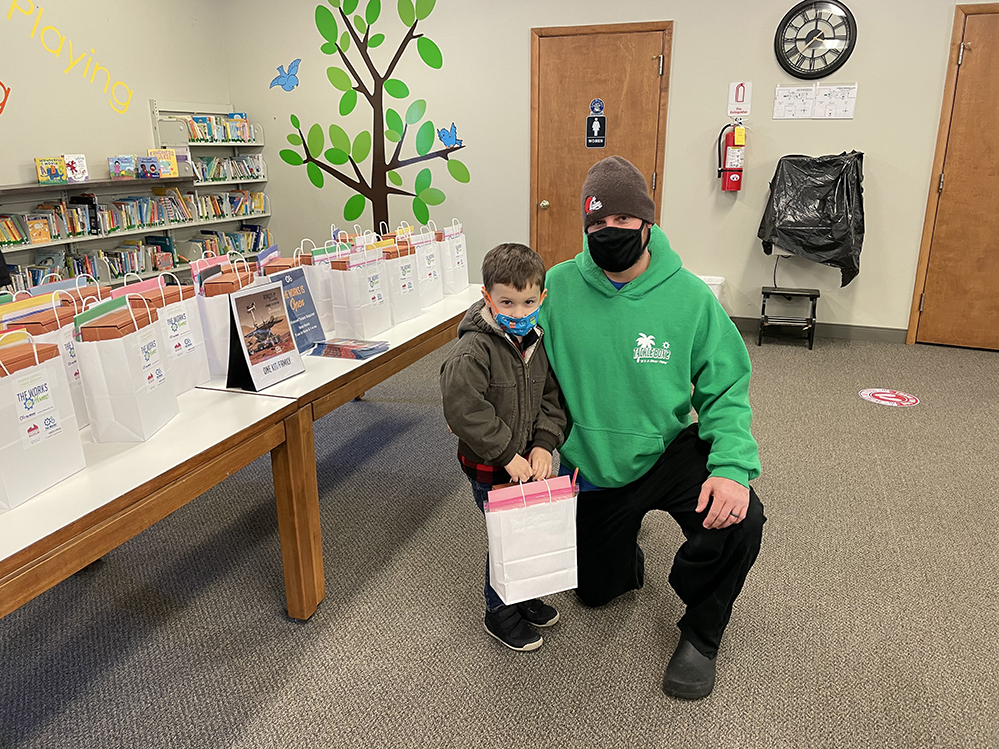Pandemic Pivot: How 2 Shuttered Ohio Science Museums Created Takeaway Kits So Kids and Their Families Could Do Experiments at Home

Get stories like these delivered straight to your inbox. Sign up for The 74 Newsletter
At the beginning of 2020, The Center of Science and Industry in Columbus, Ohio, was on a roll. The museum had sold its most tickets ever in 2019, the Ohio Museum Association had named it the best museum in the state and USA Today ranked it as the nation’s top science museum.
Then almost overnight, the pandemic shuttered schools, businesses and museums. COSI President and CEO Frederic Bertley summed up the problem succinctly: “We’re a physical museum. When you come here, you pull a button and press a lever. If we can’t open our doors, we get no revenue.”
Science museums typically make more than half their income from “people walking through their doors,” said Adam Fagen, the director of communications, advocacy and member engagement at the Association of Science and Technology Centers. Not only did COSI and other science museums face financial uncertainty, but their leaders were challenged to discover new ways to fulfill their basic mission: to deliver hands-on learning to local children and their families.
While many museums, including COSI, bolstered their online offerings, more was needed. Bertley and officials at The Works: Ohio Center for History, Art & Technology, an interactive museum in nearby Newark, quickly came to the same answer — create take-home kits that kids could use to replicate lessons typically learned inside the museum walls.

The idea of kits wasn’t new, Bertley said: “Twenty years ago, we had Ziploc bags and pipe cleaners.” But making and distributing materials during a time of social distancing was a challenge.
With staff working remotely and funding uncertain, Meghan Federer, The Works’ assistant director, and her cadre of 16 full-time employees brainstormed activities children could do at home. Instead of gazing at the night sky in the SciDome planetarium or building their own race car in the museum, children were introduced to civil engineering by using supplied card stock to create columns that were square, triangular or circular. Students could then test the strength of each shape by placing books on top to see which column could hold more weight.
Federer said The Works’ earliest kits offered one activity and targeted a specific age group. But she quickly realized that including up to seven activities per kit and making them flexible enough to suit both elementary and middle school students worked better for families.
The Works distributed its first kits by partnering with libraries. The same type of work was occurring at COSI, where staff created activities based on the museum’s best exhibits on topics such as space, water, nature and the human body. The activities were correlated to the state’s science learning standards and the national Next Generation Science Standards, Bertley noted.

Sadie Burger, The Works museum educator and volunteer coordinator, gets ready to hand out learning kits at the Fairfield County Gift of Time event in Lancaster, Ohio. (The Works: Ohio Center for History, Art & Technology)
Each of COSI’s kits includes materials and instructions for five experiments. For example, its space kit includes 3D glasses, a balloon, a straw, an activity book, string, tape and toothpicks. So, instead of playing inside COSI’s 320,000-square-foot building — which includes a dinosaur gallery, rotating exhibits where kids can drive a Mars rover in space and a Marvel exhibit featuring costumes and props from superhero movies — children could build a rocket by threading the string through the straw and tying it taut, blowing up the balloon, taping it to the straw and then releasing the air from the balloon and measuring how far it traveled down the string.
While the museum has sold some kits for $35, it has given out 90 percent of them for free, Bertley said. Other museums nationwide have also turned to creating and handing out kits, charging at least a nominal amount, Fagen said. But many of them did so only on a limited basis.
In Ohio, though, with families locked down, kits offering activities that introduced or reinforced science concepts while allowing siblings and parents to work together were immediate hits. The Works has distributed more than 10,000 activity boxes. And COSI has created 110,000 kits so far, partnering with 251 library branches and all of Ohio’s 88 counties to distribute what it calls Learning Lunchboxes. The museum has sent kits to every one of the state’s 611 school districts, and its efforts have even extended to 12 nearby states, Bertley said.

A father and son pick up a STEAM activity kit at The Works giveaway at Pataskala Library in Ohio. (The Works: Ohio Center for History, Art & Technology)
COSI began its program using county funds, but the early success led to additional support from the state, the city of Columbus and a variety of private organizations, Bertley said. The money has allowed the museum to subcontract out the work of compiling the kits.
Bertley said one example proved their worth immediately: At one food distribution site, two children arrived by themselves to get kits, he said. “They were so excited, they opened them and started their experiments right there where we were handing them out.”
At The Works, Federer said the museum funded creation of its initial kits by repurposing STEM funding it had already received. Once the kits became popular, Licking County gave the museum CARES Act money, and it received two corporate STEM grants to continue its work.
As the success of the kits grew, Federer said, “We found our circle widening through these contacts.” For her work, the Ohio STEM Learning Network gave her its STEM Innovator Award this year.
She admitted the museum was limited in how many kits it could produce, especially after reopening in October 2020. Because they didn’t outsource any of the work in creating activities, staffers had to juggle their regular duties with making and distributing kits. Plus, finding storage space inside the building for kits that hadn’t been handed out yet was a challenge, she added.
Even so, the kits may well become a permanent part of both museums’ regular offerings.
“These are products that aren’t stopping now that we’ve opened our doors,” the COSI president said. “They have created new lines of revenue and community impact.”
While these efforts have certainly raised the public’s awareness of COSI and The Works, Bertley and Federer said they can’t tell yet if the kits will result in more visitors. COSI is including a free ticket to visit the museum in each, while The Works is offering admission discounts to families who complete a survey about the activity packages.
Even without this data, both said they will continue to create and hand out kits into 2022. COSI expects to distribute another 75,000 by April but will pause after that to study how the kits were used and to reimagine better designs in the future.
At The Works, Federer said the museum will continue to operate in-person and through its activity kits: “This completely fulfills our mission to inspire creativity and learning.”
Get stories like these delivered straight to your inbox. Sign up for The 74 Newsletter

;)